The surface of Rome is crowded with antiquities and monuments dating from before the time of Christ, through the Etruscan and Roman periods, the founding and dominance of the Catholic Church, and reaching perhaps it’s highest expression in the Renaissance painting and sculpture of Rafael and Michelangelo. But there is more to Rome than what appears on the surface.
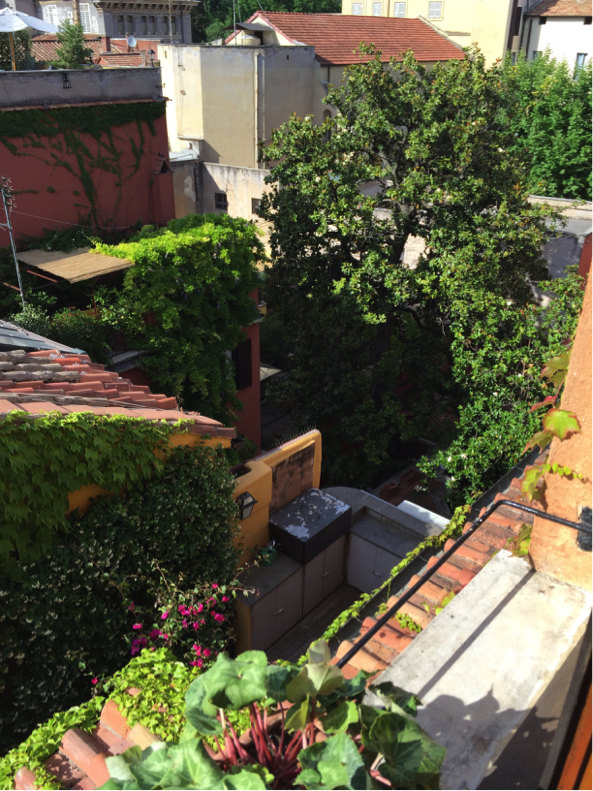
Life is thriving over our heads and underground in the Eternal City. It is often difficult to think about looking up when there is so much straining for our attention on the ground, but if you do you notice that rooftops across the city are alive with greenery. This picture was taken from our kitchen window, and there are similar views from the living room and bathroom. Our apartment is on the 5th floor of a building just off the Piazza di Spagna, and while the facades of the historic buildings on the street are neat and orderly the interior courtyards and rooftops are alive with new growth.
But it isn’t just the rooftops where Roman life thrives. There is a surprisingly active subterranean life too. There is a subway (Metro) that moves large numbers of people through a city choked with narrow twisting 7th century streets and transportation gridlock, but there is also a surprising tunnel that begins at the Spagna Metro station and leads like the labyrinth of Knossos to the headwaters of the celebrity-rich Via Veneto. I’ve spent a lot of time in Rome over the years and thought I knew the city, but this underground passagio caught me by surprise and reminded me of the Illuminati’s escape route from the Vatican to Castel Sant’Angelo in Dan Brown’s thriller Angels and Demons.
The passagio begins inside the entrance to the Metro station at Spagna (the Spanish Steps) and turns to the left just before the ticket turnstiles for the trains. The entrance is marked Via Veneto and Villa Borghese.
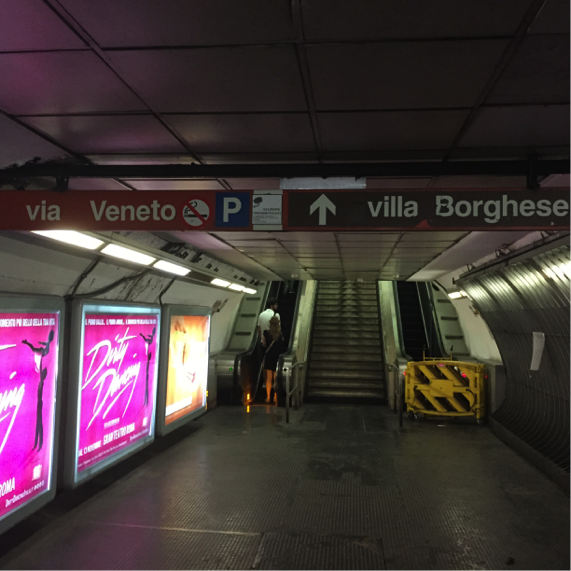
The passagio then winds it’s way under and up the Pincian Hill, one of Rome’s seven hills, to the entrance of Villa Borghese. Walking above ground, the streets leading to the Villa and the top of the Via Veneto are narrow, sometimes steep, and start with a the 135 Spanish Steps that climb from the piazza to the small square and the church of Trinita dei Monti. The steps, built in 1723-1725, were the gift of a French diplomat who probably got tired climbing the cobbled hill.
Rome’s Metro consists of two lines, A and B that cross at Termini Station. Line B, that includes the tunnel was built in 1964 and today it’s showing its age. It’s modern but dog-eared, and the shiny stainless and Pirelli rubber coated floors need a tune up. There are long escalators linking different levels and half of them are out of order or at least out of service. The good news is there is usually one in a set that is working. This one actually looks pretty good.
Sadly, the expensive, extensive, underground network is not heavily trafficked. I’ve walked it several times when there is no one in the long sightlines of its hallways.
It’s a shame that more people, especially tourists, don’t use the passage. It was well designed and includes display cases for local businesses and a significant amount of public art – paintings and mosaics.
At the end of that long, half-mile walk through the Pincian Hill you break into daylight at the top of Via Veneto and the entrance to Borghese Gardens.
M doesn’t like subways or the Metro. She wants to be above ground to check out her surroundings. There’s a part of me that is like that, but I’m also fascinated by the mystery of underground construction and awed by the accomplishment of such complicated transportation solutions – Rome, New York, London, Paris, Berlin – they’re all different but equally efficient. I take M’s point, however, and one of the best surprises when you’re above ground in Rome is looking at the rooftops. It’s fascinating to check them out. Rome is crowded and there is very little open ground for private gardens. Most people live in apartments and the rooftops offer the only opportunity to be surrounded with lush green vegetation or an ivy canopy to shade yourself from the heat. I love this scene.
If you’re not a rooftop resident there are a number of hotels with rooftop bars and restaurants. This one is in Trastevere:
Or, if you’re a tourist with an urge for a Rome rooftop experience there are apartments like this one on VRBO and Airbnb to satisfy that urge:
Rome is full of treasures, some public, some private, but it’s worth exploring to see what is beneath the surface or over your head. I know you’ll find it interesting; maybe not as exciting or interesting as Marcello and Anita did, but that’s another blog.
Keep your eyes open over and under Roma. Arrivederci!
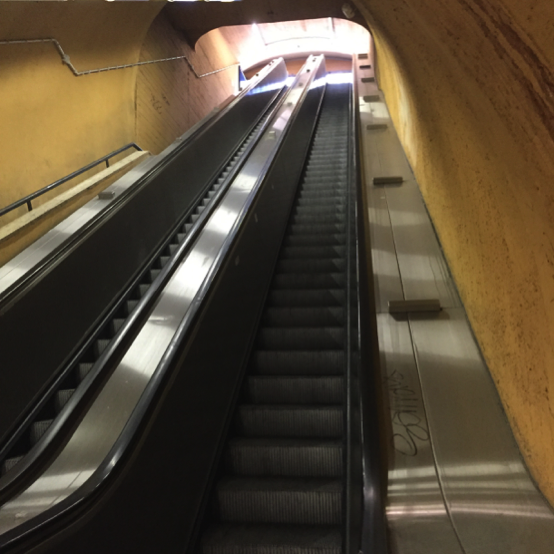
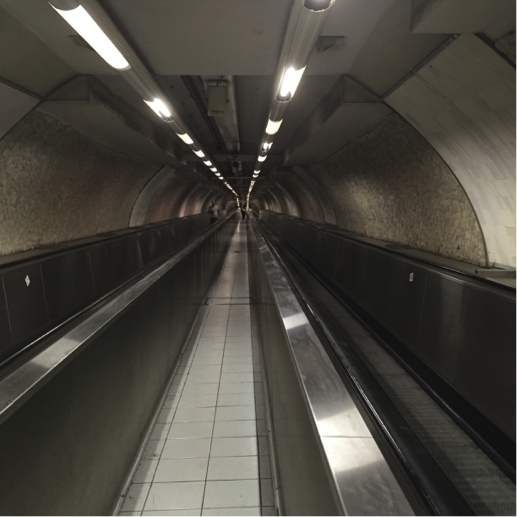
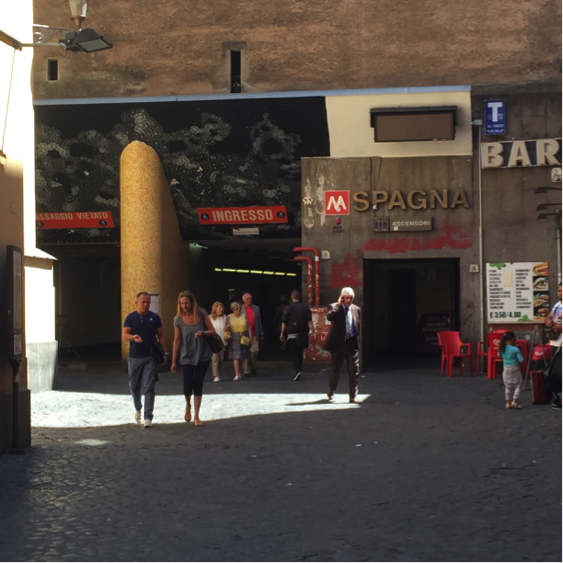
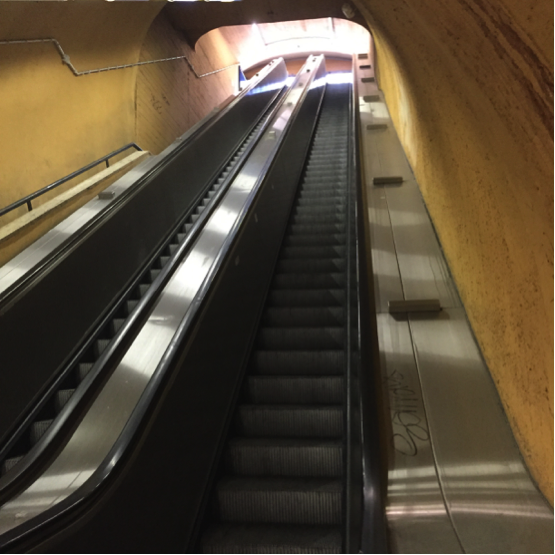
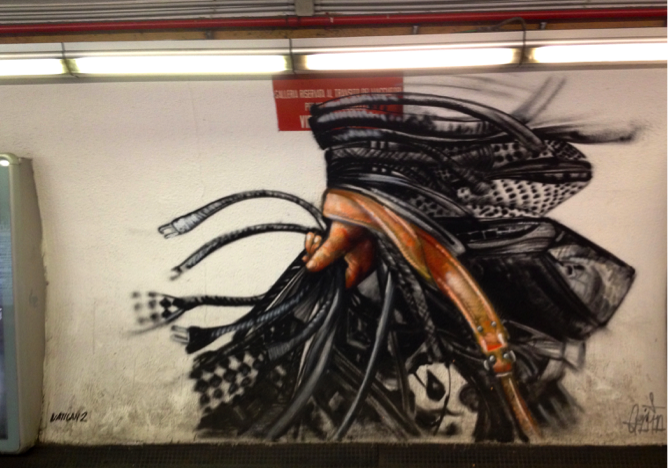
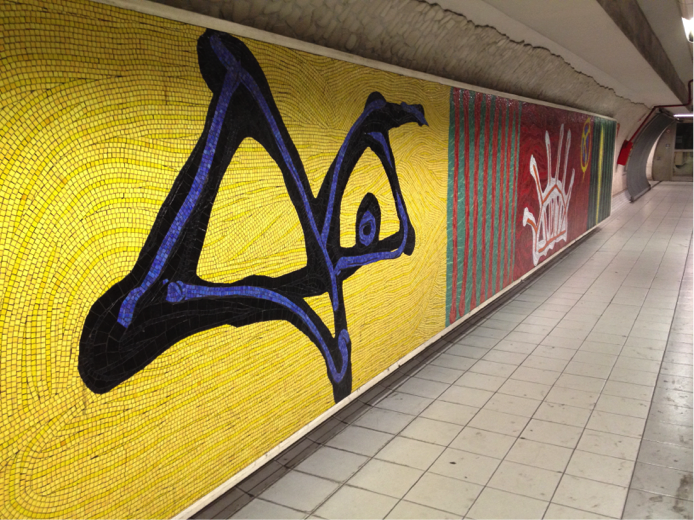
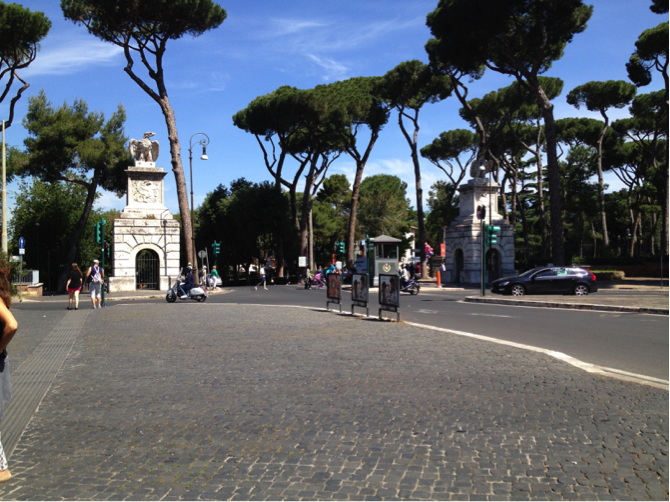
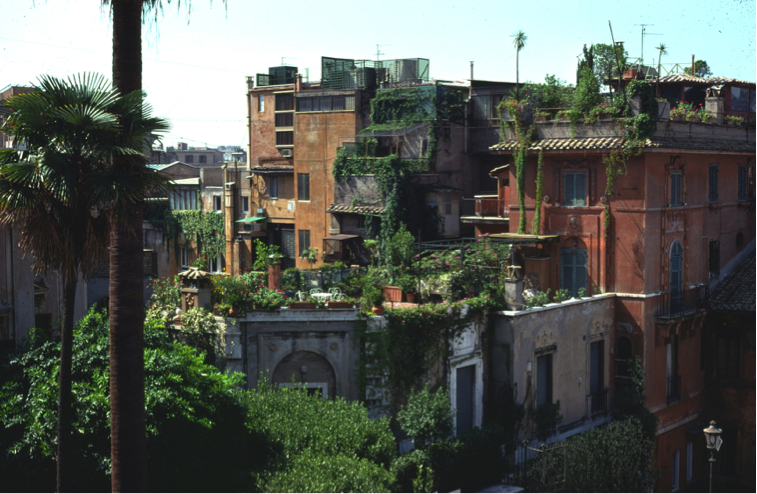
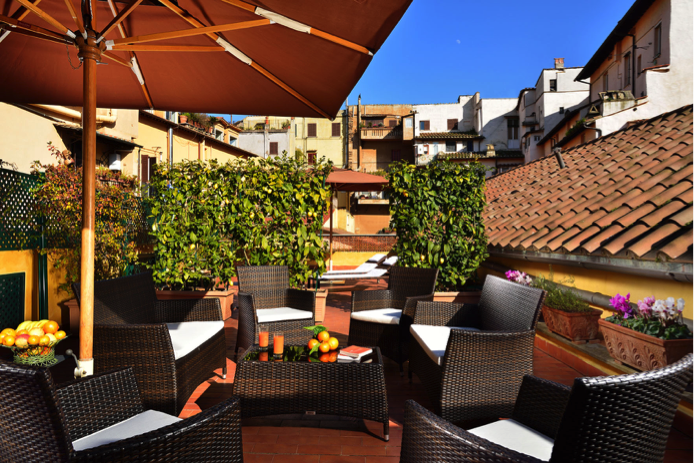
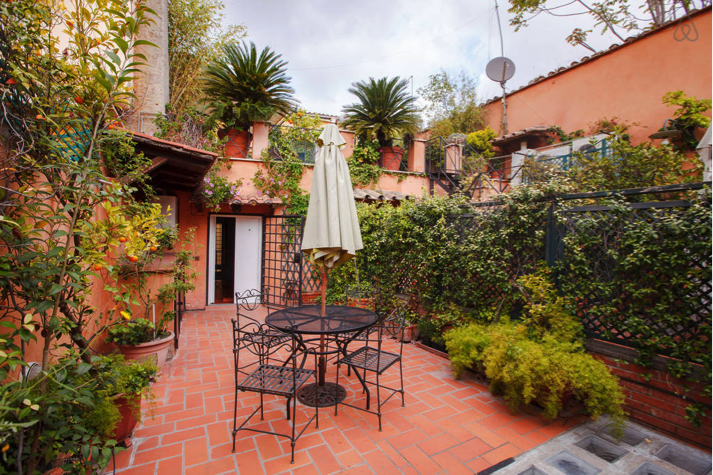
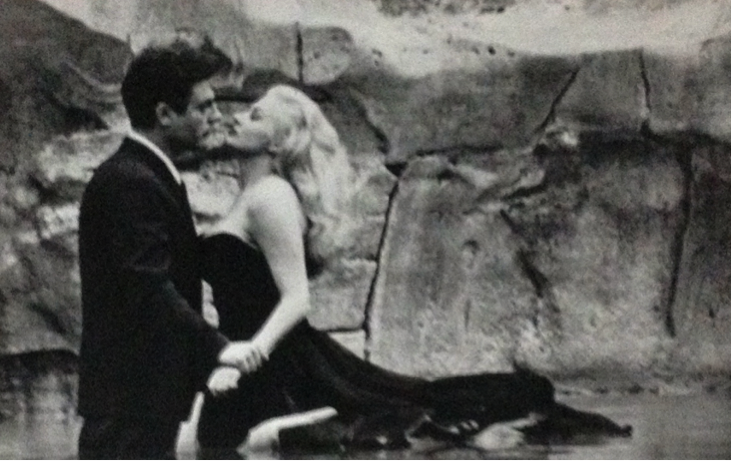
































Love the title Jack..Will read later but we’re leaving very soon and I can’t seem to get enough done. It’s always now that I begin to get depressed thinking I’ll never finish. Insane but true. Tell Marilyn I’ve download the audio version of H is for Hawk. The reviews made me want to read it as did M’s rec. It’s long…Not sure it wouldn’t be better to read. What do you think?
Keep on,
Leslie
>
Super lovely photos. I agree with M. Re: the Metro,but it is fast & efficient. SLP
Sent from my iPad
>